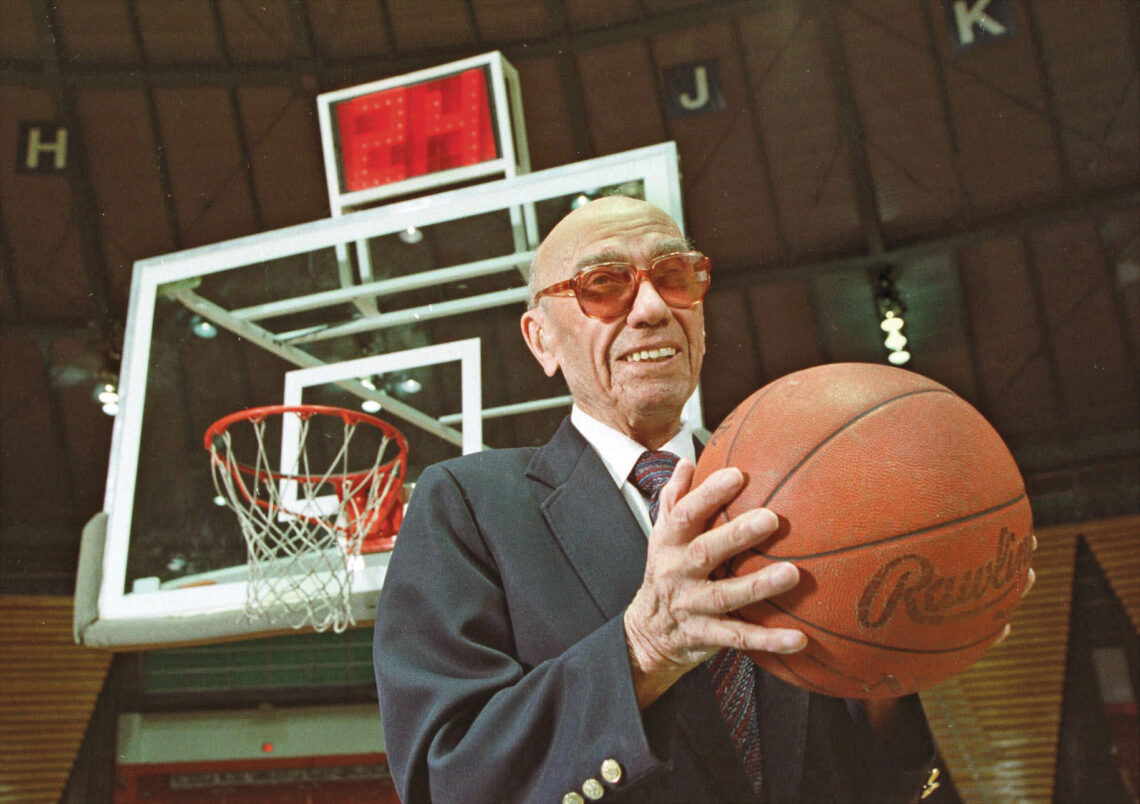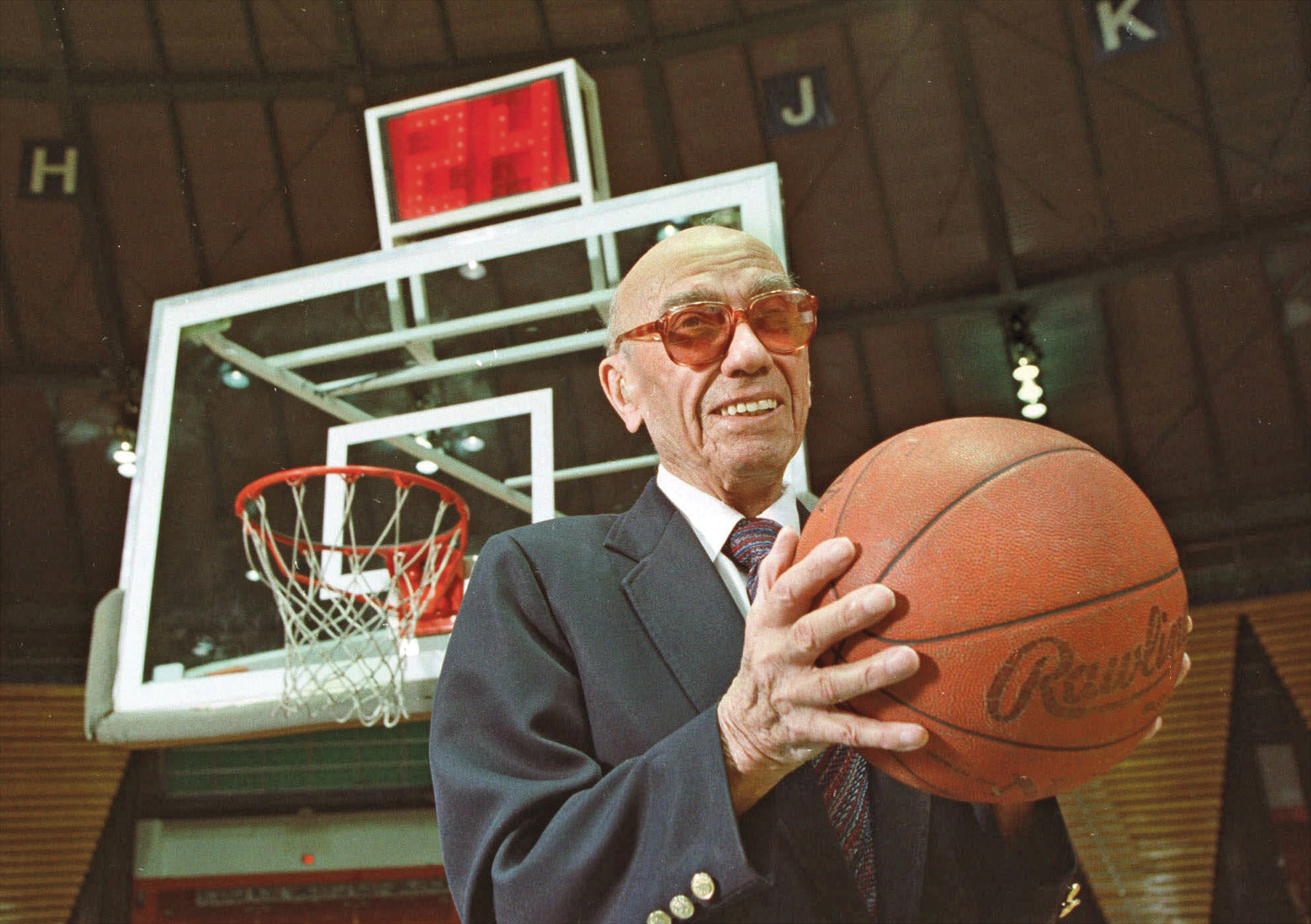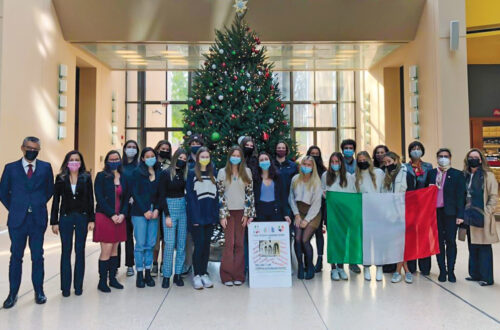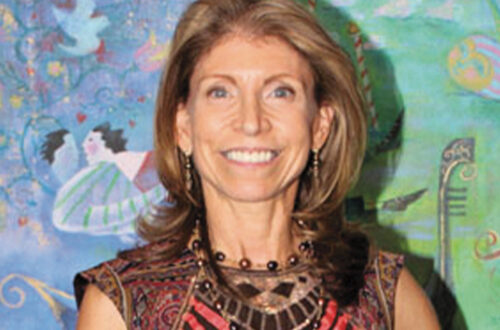
Danny Biasone: Inventor of Basketball’s Shot Clock
By Joseph “Sonny” Scafetta, Jr.
If you like the fast paced action of basketball, give thanks to an immigrant to America from Abruzzo.
Dante Biasone was born in the town of Miglianico (population 4,529 in the 2004 Census) in the province of Chieti in the region of Abruzzo, on February 22, 1909. When he was 10, he immigrated with his parents and his brother to Syracuse, New York. When they became U.S. citizens, he changed his name to Daniel, so his friends called him “Danny”.

Credit: Wikipedia
Although Danny was a star quarterback at the Catholic Vocational High School, he was not offered a college scholarship, and his parents could not afford to send him without help. Danny married his high school sweetheart Rachel. They had no children. He then began working a succession of odd jobs until, at 27, he had saved enough money to open an Italian restaurant with a partner in 1936. He sold his share of the restaurant in 1941 and bought a bowling alley which made him wealthy.
Five years later, he sent a $5,000 check to the National Basketball League (NBL) headquarters in Chicago to buy a franchise. In the Fall of 1946, his Syracuse Nationals began play with Leo F. Ferris (1917-1993) as the general manager and Alfred (Al) Nicholas Cervi (1917-2009) as the coach. In 1949, the NBL was absorbed by the National Basketball Association (NBA).
The faster paced, more exciting game brought about by the shot clock drew more fans to professional basketball.
By the early 1950s, basketball was degenerating into a lackluster game of keep-away. Teams ahead in the 4th quarter would simply stall for time, passing the ball back and forth, dribbling away from opponents, while crowds moaned, booed, and headed for the exits. To prevent the game from heading into oblivion, Danny devised the 24-second shot clock by dividing the estimated number of 120 shots per game over the previous three seasons into the 2,880 seconds of a 48-minute game. The NBA adopted it as a rule starting in the Fall of 1954. Results were immediate and striking. The faster paced, more exciting, high-scoring game appealed to more fans who flocked to court sides. Danny was dubbed a savior and “The Patron Saint of the NBA” by League Commissioner, Maurice Podoloff (1890-1985). His Nationals won the NBA championship for the 1954-55 season. After the 1962-63 season, Danny sold the Nationals for a handsome profit to investors who moved the team to Philadelphia and renamed them the 76ers. Danny remained in Syracuse to run his noisy but prosperous bowling alley.
In 1982, Danny received the annual John W. Bunn Lifetime Achievement Award from the NBA. He was its tenth recipient. The award was named after Bunn who served from 1949 to 1969 as the first Chairman of the Basketball Hall of Fame Committee and was given to a person who contributed significantly to the sport. Danny died from a blood infection at the University Hospital in Syracuse on May 25, 1992, at the age of 83. He was posthumously inducted into the Naismith Memorial Basketball Hall of Fame as a contributor to the game in 2000.
March/April 2022





